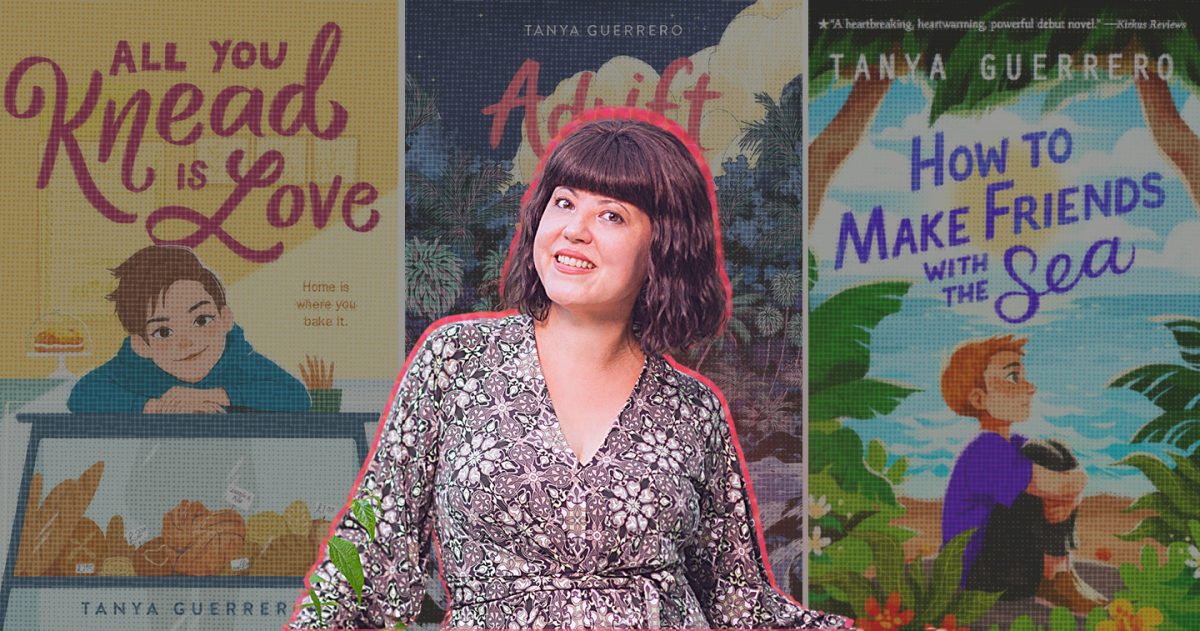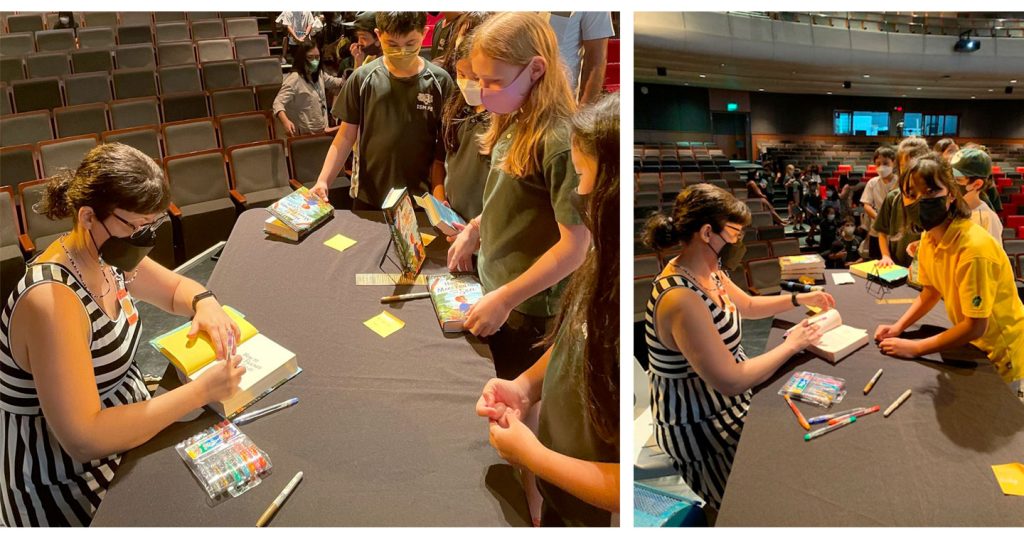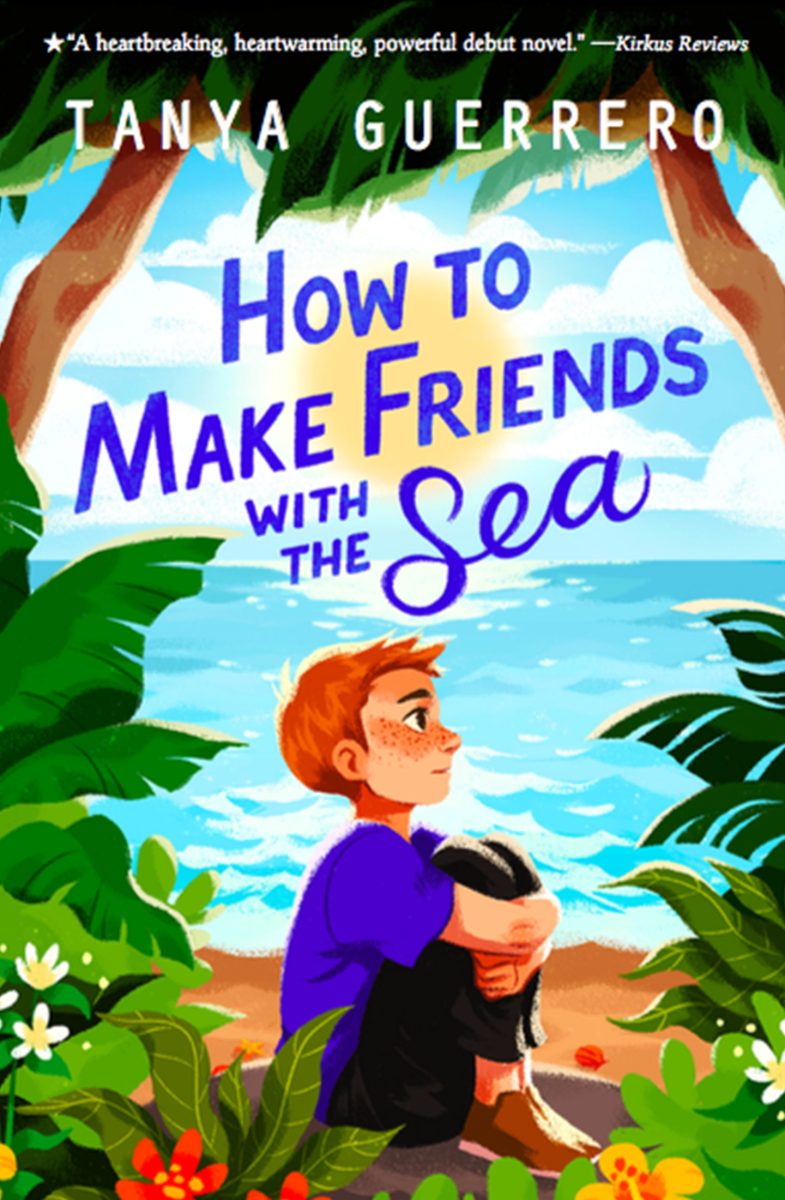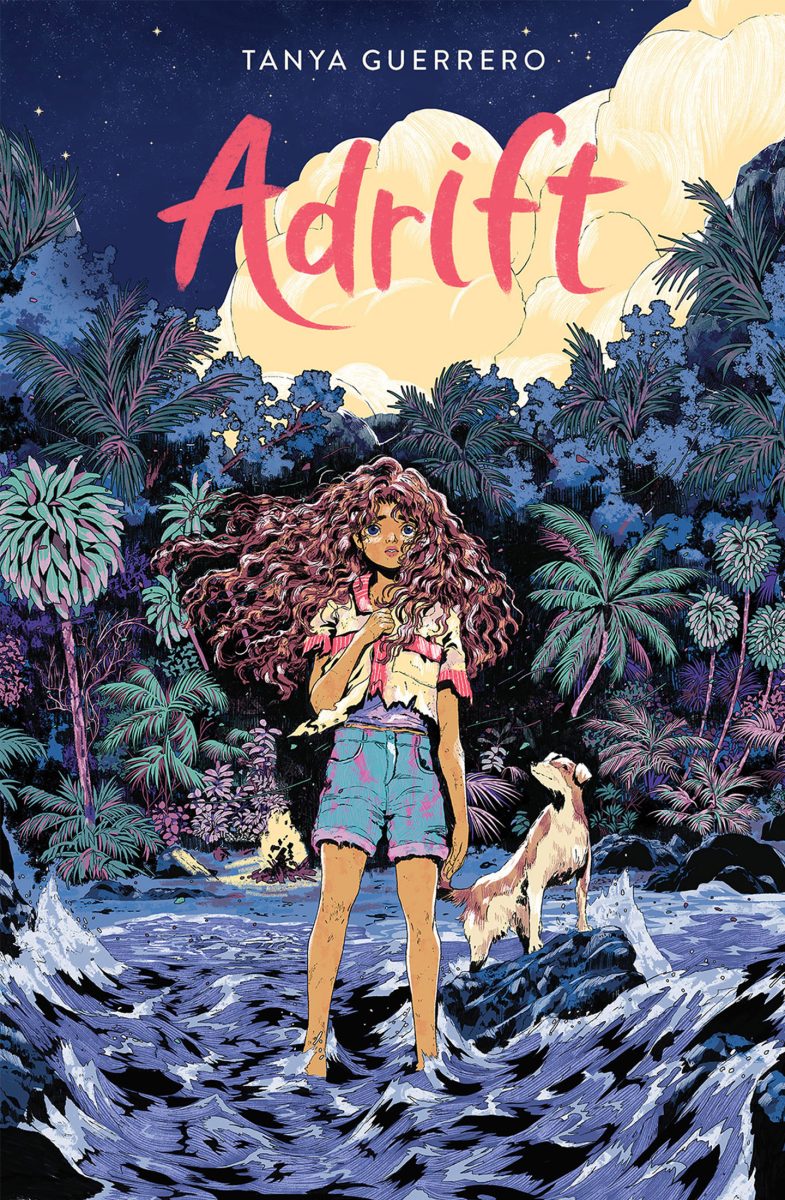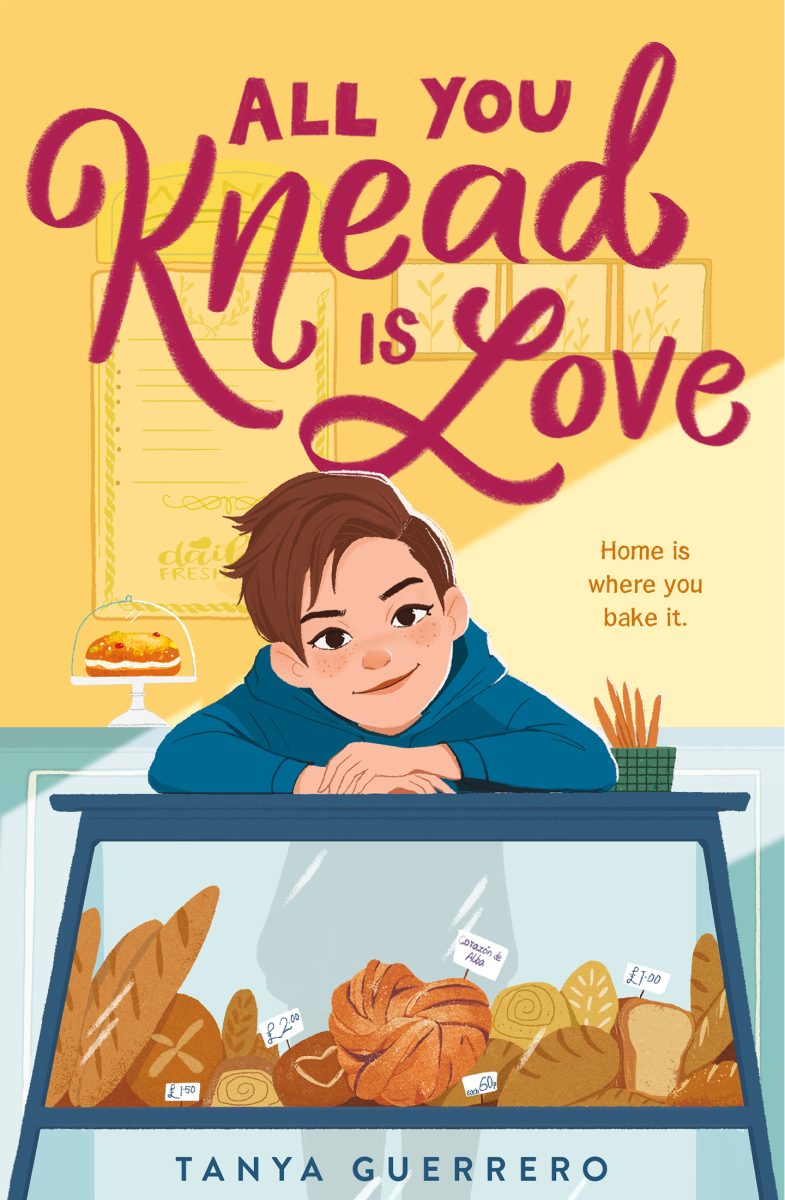MANILA, PHILIPPINES — At an early age, kids develop compassion, empathy, and a richer vocabulary through the help of books. Some important life skills and lessons that kids also learn from reading are social and emotional development, forging their independence, honing their problem-solving skills, and navigating peer friendships. These stories meant for the ages of eight to 12 impart courage and resilience among its young readers to help them get through the rocky transition from childhood to their teen years. This delicate stage in their growth is what middle-grade book author Tanya Guerrero guides kids through with her honest and relatable tales that deal with real-life struggles and situations that kids these days might face at that time of their lives.

Tanya was born in Manila and raised in different countries and cultures from a young age, all the while dealing with tough situations that most kids today also find themselves in. For a while, she moved from Manila to Spain where she was raised by her maternal grandparents after her parents went through a divorce. She then moved to New York where she took up screenwriting in college and landed her first job in children’s publishing. Finally, she moved back in the Philippines, and she’s now living with her husband and daughter who is also in the middle-grade age group.
On the beginning of her writing journey and love for books
In the midst of her puzzling childhood experiences, she found solace in the company of books. “I grew up reading a lot of Judy Blume. While I was in middle grade in the ‘80s, she was like the middle-grade and YA author of that decade. She was pretty much an inspiration [to me]. There were other books that I was super into as well. But the funny thing is, at that age, I read quite widely, which I think is one of the reasons why I ended up becoming a writer,” Tanya recalled. At the time, she was just a kid living in New York. “I was like nine to twelve years old, and I was reading a lot of middle-grade and YA books. But in those days, when you went to the library, the librarians didn’t really stop you from taking out adult books. Back then, I used to borrow everything from Stephen King, to The Clan of the Cave Bear, and VC Andrews’ books like Flowers in the Attic. I read very widely, so I really saw what the range of writing could be at an early age.”
Despite her huge success today, her journey to officially becoming an author didn’t start right after college. After graduating, she moved to New York City where she got offered a job as an assistant photo editor and ended up holding the position for a decade. “It was also in children’s publishing, so it all connected eventually, somehow,” she illuminated.
Foreshadowing her future in the field of writing
Working at a publishing house for children’s books was perhaps a foretelling of what she would be doing decades later. Now in her forties, Tanya recounts how she finally started to pursue writing in her thirties.
“I just had a child — my only daughter — and I was at a stage where I was wondering what I was gonna do with the rest of my life, like an early mid-life crisis,” she pondered. “I used to bring my daughter to preschool when we still lived in New Manila. And preschool was like three hours; it wasn’t very long. Because of the traffic, I’d usually just hang out at a cafe in a nearby mall.”
When she was a teenager, Tanya already had the desire to be a writer. But back in the ‘80s and ‘90s, there weren’t as many resources available on how one can become a writer; so, she dismissed the thought as a lofty goal and abandoned the idea then. But by the time she hit her mid- to late 30s, the dream to be a writer had caught up with her. “I was like, ‘You know what? I have the time now. I have a little bit more resources. Why don’t I give it a shot?’ So I decided that while my daughter was in preschool, I would just try to write. The first manuscript I wrote was actually a YA and it sucked really bad!” she laughed while reminiscing her first attempt at writing.
Despite thinking her first work was bad, Tanya persevered and honed her skills at the craft. “The thing is you have to start from a certain point, right? Most people don’t sit down and then write a masterpiece. That’s really rare. Usually you write one or two bad things, and then you get better at the craft. And I was just like, ‘Okay, well, that didn’t work out. I’ll just write a second book which is also YA,’ and then it was actually much better. So that’s when I went to the process of trying to get an agent.”
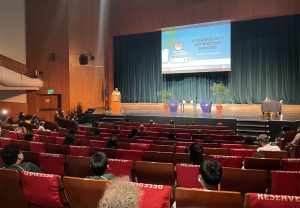
Lending her voice to a younger generation
Having been exposed to more mature books early on, Tanya initially thought of writing a young adult book because the market seemed more glamorous to her. “A lot of people want to pursue YA at the beginning,” she explained. The second book she wrote which fell under the YA category was what she got her agent with. After getting her agent, she had to face the strenuous process of submitting to editors, which can take years. She ended up doing four rounds of revising the book with the editors, but to no avail. “I ended up shelving that manuscript, and funnily enough, one of the editors that was interested [in the book], the feedback she’d given me was that my voice seems younger — better suited for a younger audience.”
Tanya took that advice, and from there, her exploration into the world of middle-grade books began. “That’s when I decided to write a middle-grade book. And that middle-grade book ended up getting a book deal. But the funny thing is, that YA book that I shelved actually ended up being my third book.” She took the manuscript off the shelf and dusted it off. Then, she took the YA quality out of it to make it suitable for a younger audience and impart a fresh take on the story. “I always tell people who want to pursue writing, ‘A manuscript might not be right for that particular time or that particular place. But always keep it there, keep it in your folder, and you never know. Later on, you might be able to revive it and do something different with it.’”
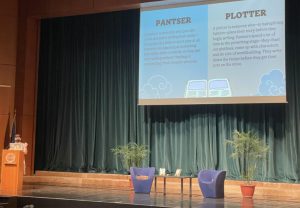
The healing powers of writing and drawing from personal experience
Most writers share a common inspiration — their own lives. And with Tanya’s interesting and ever-changing environments growing up, a lot of her own memories are embedded into her stories one way or another.
“I think most writers take a little bit of inspiration from their own experiences. Take a situation or an experience, and then turn it into a fictional account that’s more complex and more drawn out. All of my books take a little bit of inspiration from things I like, things I’ve done, things that have happened to me, or people I’ve met. Sometimes, I also get inspiration from news stories I see, or I might be watching a movie or TV show, and there might be a little subplot or something small that makes me excited about it.”
Digging deeper into her own accounts, she shared that she got a lot of inspiration from changing home countries as she was growing up — living between Manila, Spain, New York, and going back to Manila again. “I did a lot of moving around. That is something that definitely usually appears more in my books, like a third culture kid kind of experience,” she explained. The divorce of her parents and consequently moving to Spain to be taken care of by her grandparents for two years were inspirations for her first book, How to Make Friends With the Sea. Her love for baking bread and fondness for animals appear in her second book, All You Knead Is Love.
“My mom also used to run a very small resort in Palawan. It was a tiny island on the edge of the South China Sea, and it was super remote. I took the experience of the time I spent there and that catapulted my third book, which is a survival book about a girl who gets marooned on an island and has to survive,” she construed of how her latest book Adrift came to life.
“As you can see, there’s a little bit of here and there, but then I inject fiction into it. You just take a truth, and then you make it into a fictionalized depiction of the truth,” Tanya elaborated. By using her own experiences and transforming them into fiction, she’s able to mold alternative worlds and outcomes based on solid truths. And all these can also be a healing experience. She explained, ”It can be cathartic: if you have a certain bad experience in your childhood, you can take that experience and create a story. And by the end of the story, you kind of feel like you’ve been healed by it, like you’ve made what happened to you happen to a character in your story. And by the end, something good happens to that character. It can give you some healing powers on traumatic experiences that have happened to you.”
Since she drew from her own memories and created different outcomes from them, it’s inevitable that a favorite would be chosen. As any writer would agree, the more you pour your heart out into something, the more fond you become of it. “My favorite is my second book, All You Knead Is Love. And you know what? It’s the book that’s been read the most. So I kind of have a feeling that if your [particular] book is your favorite, it has a tendency to do better for whatever reason. Maybe it just shows on the page,” Tanya ruminated.
The process of writing as it is today, and the two kinds of writers you meet
For most people, they might think that it takes years to finish writing a book. But the process these days is surprisingly a lot faster. “In the olden days, pre-internet, writers were like, ‘Oh, I will write a book. It might take me five years, but this is my passion.’ But in today’s market, that really doesn’t work. Publishers want to sign authors who can usually produce one book a year, or at the minimum, every two years. But the ideal is really every year,” Tanya explained.
In order to keep up with the industry’s pace and produce a book every year, agility in writing is a necessity. For Tanya, it takes three to five months to create a draft of a book. She’ll then send it to her agent, and the back-and-forth of revisions might take about a month. After that, the polished story will be sent to the publishing house, where it will spend anywhere from 18 months to two years before it comes out in a physical book. “Your first book takes a really long time to happen, but once it comes out, you’re already in the middle of the next book. The writing itself is not as long as the actual publishing,” she clarified.
She further illustrated that there are two kinds of writers: the plotters and the “pantsers.” Plotters have a clear idea of what they want to write, and they create a detailed outline of it. The character profiles follow, and how they’re all connected to each other. Once those are settled, that’s when the process of writing the actual book begins. On the other hand, “pantsers” are the complete opposite. They only begin with an idea, sit down, and just start typing. They don’t necessarily know every plot point nor every character that will exist in the story — they just come up with them as they work along.
“For me, I’m the latter; I’m a pantser,” Tanya mused. “Although, with each book, I’ve gotten slightly more organized. But generally speaking, I have an idea, and I usually know the beginning and the end of the story. Everything in between just comes to me as I go. But at the end, I might have to take longer to revise because it might be slightly messier!”
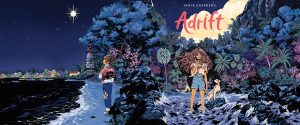
How her books affect and benefit young readers
Children absorb everything they see on TV and read in books. They adopt traits from characters and imbibe values and morals from stories. As a middle-grade book author, Tanya understands the weight her words have on kids who read her works, and how her stories affect them in the most delicate and transformative stage of their lives.
“That’s the really great thing about writing middle-grade — at that age, which is nine to 12 years old, it’s where there’s like a huge shift. You’re going from being a child to approaching becoming a teenager. There’s a lot of personal emotions. There’s a lot of finding yourself, finding out who you are. I have that sweet spot now for writing for that age because you can really introduce so much, whether it’s trauma, how to navigate friendships, how to navigate school, or how to navigate a lot of different things.”
Tanya went on to share about how kids are receptive of her stories and make them their own: “I really love being able to inject certain experiences for that age group into my books because I feel like the readers really take what you are telling them to heart. I get letters and emails from kid readers all over the world, and they’re like, ‘I really related to this character,’ or ‘This experience felt very personal.’ And you can really see that you help them not feel so alone, and help them problem-solve a little bit; even if you don’t solve the problem for them, just the fact that you’re making them feel less alone is already good because that part is really difficult for somebody of that age — to feel like they’re the only ones going through something. When they feel like they’re not the only ones going through it, then it can make them a little bit stronger, and make them a little bit more resilient toward whatever situation they’re experiencing.”
As someone who read widely, Tanya also encourages kids to explore other books outside of their age range or preference to see what else is out there. “I always tell kids to look for books that you feel a personal connection with. Not to say, ‘Don’t ever read fantasy,’ or ‘Don’t ever read books that are way outside of what your experience is.’ Because even within fantasy books, there’s always something you can relate to. The characters, whether they’re set in a real world situation, or set in a fantasy situation — they all have emotions that people can relate to. So I always tell kids, ‘Just go to the library; go to the bookstore. Read the backs of the books; read the first few pages. And then when you find something that hits you just in the right way, then that’s a book for you.’”
A piece of advice, from one writer to another
The amount of young, aspiring writers has been increasing progressively over the years, thanks to the amount of resources that are easily available to them now and the vast range of genres and topics they can cover. Having started writing in her thirties and with three successful books to her name so far, Tanya shared a few words of advice to those who wish to pursue the craft: “My number one and number two advice are to really just dive into it. Read as much as you can because reading is studying, and you become better at your craft by reading. And even if what you write at first is like total crap, that’s fine. Every writer has written total crap. It’s just the point of sitting down and doing it, because nothing’s gonna happen if you don’t actually sit down and do it.”
Most aspiring writers today also have full-time jobs to tend to, yet the dream of creating their own story and publishing their own book someday still lives in their hearts. It can be challenging to balance a day job and writing. “Give yourself a certain amount of hours a day to dedicate to writing,” Tanya suggested. “As months pass, you will already have a draft done. So it’s not an impossible situation — you just have to be really determined.”
She also shared and empathized with the pressure and feeling of isolation writers go through in the process of creation, stating that it’s better to say these truths plainly rather than sugarcoating the experience for those who wish to go down this road: “Writing in particular is a very one-person thing, because you’re the one writing it. It’s just all on you. It’s a lot of burden, but it’s gratifying. It’s just the point of being persistent, doing the work, and learning — and you constantly keep on learning too. So, never stop improving your craft. Never stop learning.”
The road ahead for Tanya
While writing for a specific and particularly young age group is what Tanya has found success in, it’s never too late for her to try her hand at writing for an older audience. “Actually, I just finished my first draft of an adult book. So, I think I’ve decided that that’s my thing — middle-grade and adult — but nothing in between. I’m revising it right now!” she shared enthusiastically. “And hopefully in May, I’ll start querying agents for this adult book. Hopefully, I can kind of do both — what I want to do is do both of those.”
With three popular middle-grade books under her belt and a new adult book underway, one would think that Tanya has already achieved all her goals as a writer. But before ending our conversation, she shared a new and rather personal dream of hers that would resonate with all authors: “You know, every writer’s fantasy is to be somewhere, like on the subway or on a plane, — somewhere — and see somebody reading your book. A complete stranger. That’s like the kilig factor. ‘Oh my God, they’re reading my book!’ It hasn’t happened to me yet!”
Check out Tanya Guerrero’s books on her website.

